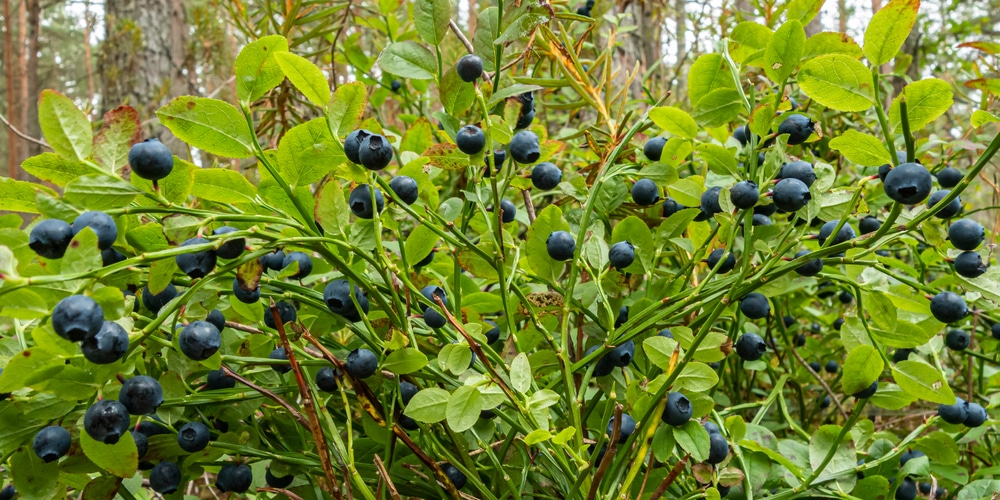Blueberries are superfoods that go very well with any breakfast fare. They’re great to have as plants in your house too, because once established blueberry bushes tend to produce bountiful amounts of fruit every year.
That said, the time when to plant blueberries in Texas is a crucial piece of information you need to increase your chances of succeeding. In the state, the best time to plant a blueberry is from winter until early spring.
Here’s how you can grow your own blueberry in Texas.
When Should I Plant Blueberries in Texas?

Growing blueberries in the Texas region is relatively easy. You just have to choose the right species, give it what it needs and care for it so that you get a bounty of delicious fruit come harvest time.
When starting, you can choose between bare-root plants or blueberries in containers. You can schedule the planting anytime between winter and early spring once you’ve picked an ideal spot in your garden or yard.
A common beginner’s mistake is to plant blueberries too deep. The fine, fibrous roots don’t need that much depth and should be fine sitting in shallow soil (around 4 inches should be fine). For good measure, you should place them in the same depth as they were originally in the container.
Another important requirement for blueberry planting is the soil’s acidity level. You must aim for around 4.5 to 5.5 in the pH scale, which shouldn’t take too much effort.
If you’re in East Texas then growing blueberries should be easy, as the soil and climate are optimal for it. Those living in Southeastern Texas should choose the southern highbush variety as it blooms early and doesn’t need the usual chilling period as most blueberry varieties. Those in the west can still grow the plant but it’s recommended that you put them in containers or raised beds.
Generally speaking, if you can grow azaleas in your region then you shouldn’t find it too hard to grow blueberries. After all, they’re technically in the same family and have more or less the same requirements.
Texas Hardiness Zone and First and Last Frost Date
The state of Texas has a hardiness zone ranging from 6 to 9, according to the USDA. So, blueberries that thrive in zone 5 aren’t going to cut it. Depending on where you live the average temperature can be as low as -10 degrees F to 25 degrees F.
The climate in Texas is characterized by warm days that can extend well into the winter season. Although the zone map serves as your initial guide in knowing which plants you can grow in your region, several other factors come into play, such as humidity, soil condition and location.
In Texas, the risk of frost starts November 24 up until March 3, with a certainty during December 17 through February 6. The state enjoys frost-free dates beginning March 28 until November 3, and that’s approximately 266 days’ worth of growing time for blueberries.
Blueberries require a period of ‘chilling’ in order to kickstart the fruit production process. It’s also recommended that you get several varieties or cultivars of blueberries as they do not self-pollinate.
The Best Blueberry Species to Grow in Texas
When it comes to growing blueberries in Texas you’ll have two choices- the popular rabbiteye varieties and the highbush varieties.
Highbush blueberries have several advantages over its rabbiteye cousins in that they bloom and produce fruit earlier. Chilling requirements are more forgiving, too. However, they tend to have a shorter lifespan and should be protected from the elements with mulch, row covers and similar structures.
As for rabbiteyes, you’ll have much wider options. For cross-pollination purposes, Vernon and Premier go with Alapaha, while Powderblue and Tifblue varieties are best paired with Brightwell. Vernon is suited for Alapaha, while Brightwell performs to standard when you get it with Premier and Austin. If for some reason you can’t get two different types then it’s recommended that you get Tifblue.
When to plant blueberries in Texas: Conclusion
As a final word, you should reserve a sunny spot in your landscape to grow blueberries. It should also have well-draining soil and plenty of mulch to preserve moisture. Take special care not to introduce too much fertilizer at any given time, and you should ensure that the soil is constantly moist but not too soggy.
Related Article: Good Blueberry Companion Plants

